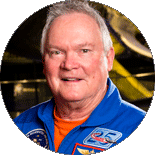THE FLIGHT DECK • March 2023
A word from astronaut Bruce Melnick
As BA Better World continues to place sustainability at the heart of what we do, it’s useful to check in with the Earth’s greatest protectors about why it matters. Step forward former NASA astronaut Bruce Melnick, whose account of a celestial career will just about transport you to the stars…
We would come back down to Earth at 3,000km per minute – that’s around ten times faster than a commercial airliner. Travelling this fast, you don’t feel Earth’s gravity until right before touching down. When you first set foot on the ground again, everything feels so heavy. The ground crew would always chuck us an apple to eat. Without fail, it hit the floor every time. To us, it was like a bowling ball, and we couldn’t catch it.
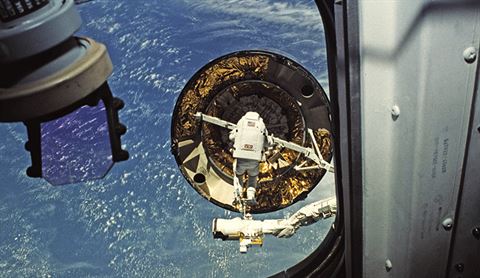
Pierre Thuot spacewalks at the end of an RMS arm operated by Melnick on a mission to fix Intelsat VI
Becoming an astronaut was not easy. The odds of being selected were very, very low. In 1990, when I was eventually successful, there were around 5,000 qualified applicants. Of those, 120 were interviewed and 15 of us were chosen. It took me ten years of applying to get there – during which time I’d built a strong résumé flying helicopters in the US Coast Guard. It’s crazy how many people want to be astronauts nowadays. Last year, I think they had 18,000 applicants.
I’ve orbited the Earth 207 times with 300 hours in outer space. On the Ulysses satellite mission, we were the first team to launch a satellite into polar orbit. We travelled at 28,000km per hour towards Jupiter and released the satellite during a window of just a couple of seconds. On the STS-49 mission, we needed to catch and change the engine of the Intelsat VI satellite. I was operating a mechanical arm with astronaut Pierre Thuot at the end of it – he had a device for seizing the satellite. After three unsuccessful days, we asked the ground team if we could send three astronauts to grab the satellite with gloved hands. They thought we were nuts, but the next morning we were woken up by the sound of the Rocky theme song and heard: “Houston, we’re sending out three spacewalkers”. It was the first and only time three astronauts had been on a spacewalk at the same time. And, yes, we completed the mission.
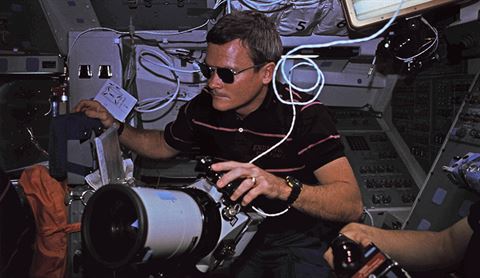
Bruce Melnick gets to grips with zero gravity on the STS-49 mission
There was always time for fun, though, and veterans would often play tricks on the rookies. For instance, every astronaut has a colour that’s used to keep track of what’s theirs – we had colour-coded clothes and stickers on our food. I love a shrimp cocktail, but we were only allowed one a day. Before a mission, I told my teammate Chilly how great the shrimp was and advised him to bring as much with him as he could. When we were in space, Chilly quickly ran out of his shrimp cocktail, and couldn’t understand why. I didn’t tell him that I’d replaced his yellow stickers with my green ones.
The awe of it all can get in the way. I remember I was on the STS-41 flight in 1990 when I was instructed to take a picture of the external tank after it detached from the shuttle and before it burned up in the atmosphere. I got the camera and floated up to the overhead window and just froze. Our beautiful blue planet was so mesmerising that I forgot to take any photos.
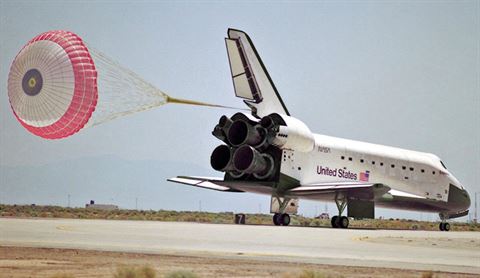
The STS-49 Shuttle Endeavour performs the first drag chute landing at Edwards Air Force Base in 1992 (NASA)
It’s alarming how frail the atmosphere looks around the planet. It’s a very small band shielding the vibrant life on the surface from the black vacuum of space. It contains the ozone layer, which protects us from the sun, and provides rainwater for drinking and the oxygen we breathe.
Going to space turns you into a protector of Earth, no question. The trouble with protecting the planet is that every country in the world needs to come together to do it. We need to prevent emissions from being pumped into that delicate atmosphere as a collective effort. It’s a hard place to get to, but I’ve seen first-hand how important it is that we get there.
In terms of sustainable space exploration, one idea would be to move heavy manufacturing up into a low Earth orbit. That’s not to say we’d put a bunch of junk up there, but we could end up making the Earth a place solely for plants, animals and people. Hopefully, soon we’ll come up with a very reusable rocket system to make these things possible.
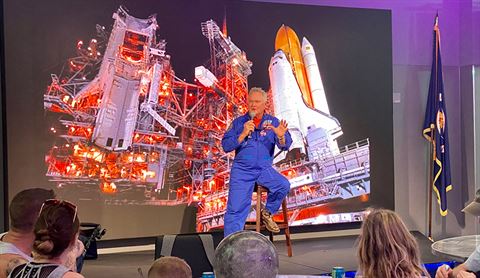
Bruce Melnick is now an ambassador at Kennedy Space Center Visitor Complex
Quick-fire questions
Favourite space movie?
Space Cowboys. That’s the sort of rescue mission I’d go and do if an asteroid threatened us and old shuttle pilots were needed to go and save the planet. Apollo 13 is also great.
Favourite thing to do in Orlando?
I’m an outdoorsman, so I like to fish, hunt, drive racing cars and play golf. I also like going to Epcot and ‘travelling’ through the different countries.
Best thing to see at the Kennedy Space Center Visitor Complex?
The Apollo capsule, Saturn V rocket, Elon Musk’s SpaceX rocket hanging from the ceiling of a new exhibit, and the Space Shuttle Atlantis that’s been to space 33 times.
Something we might not know about life in space?
Because you hardly use your muscles up there, you don’t need as much sleep. Most of our ‘bedtime’ was spent staring out of the window and watching the Earth.
What does take-off feel like?
Eight very fast minutes that are extremely loud and rough. As the shuttle builds up to three Gs, it’s hard to breathe and talk, until you instantaneously go to zero G and you’re free-floating. Suddenly everything is quiet and smooth. It doesn’t feel as if you’re moving, but you’re travelling at 28,000km per hour.
This article has been tagged Adventure, Technology
More from previous issues
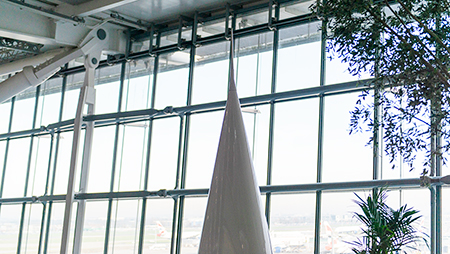
Five fantastic airport lounges around the world
If you’re travelling in Business or First, the lounges of other oneworld member airlines are yours to explore
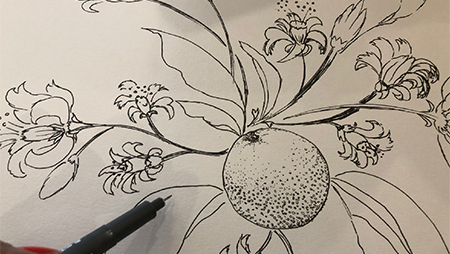
My Club: textiles artist Jag Sihra
The former British Airways design manager reveals how her travels and heritage inspire her line of fashion accessories
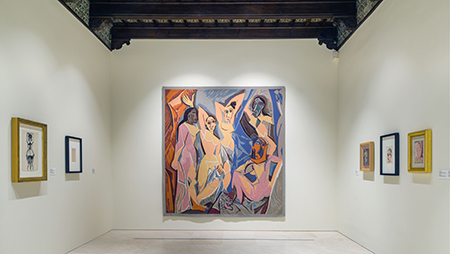
The Reward Flight saviours: Malaga
Our Reward Flight Saver could have you winging your way to a new destination from as little as £1
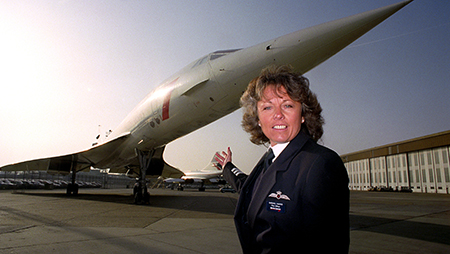
Five inspirational women in aviation (who you’ve probably never heard of)
The Club’s new flashback history series kicks off with these impressive pioneering women of British Airways
